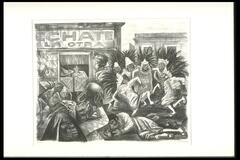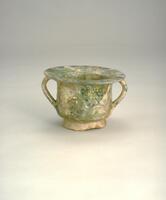730 UMMA Objects
730 UMMA Objects

Korean (Korean (culture or style))
Tea Bowl, 'ido chawan' type
16th century
Bequest of Margaret Watson Parker
1954/1.535

Chinese (Chinese (culture or style))
Bowl
14th century
Gift of Toshiko Ogita in memory of Tomoo Ogita
1987/1.306
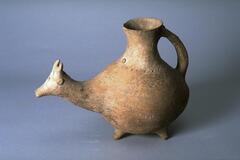
Iranian (Iranian)
Vessel with spout in the shape of an antelope head
Gift of the Estate of Maxine W. Kunstadter in memory of Sigmund Kunstadter, Class of 1922
1983/1.430
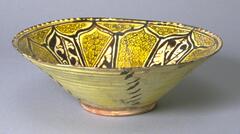
Iranian (Iranian)
Shallow bowl with stylized floral medallion
1000 – 1199
Museum purchase made possible by the Margaret Watson Parker Art Collection Fund
1961/1.183

Iranian (Iranian)
Deep bowl with vegetal and calligraphic designs
10th century
Museum purchase made possible by the Margaret Watson Parker Art Collection Fund
1961/1.185
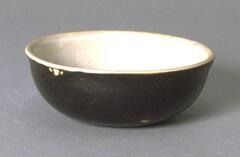
Chinese (Chinese (culture or style))
Jar Cover
800 – 999
Given in memory of James Marshall Plumer by John Maxon, Architecture and Design '41
1961/2.1
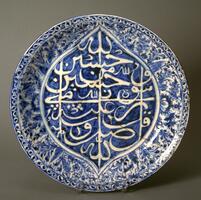
Ali ibn al-Hajj Muhammad
Platter with an inscription from a Hadith [a saying of the Prophet Muhammad], signed by Ali ibn al-Hajj Muhammad
1600 – 1799
Transfer from the College of Architecture and Design
1972/2.158
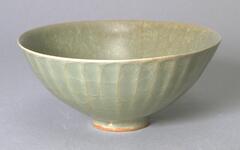
Chinese (Chinese (culture or style))
Bowl
13th century
Museum purchase for the James Marshall Plumer Memorial Collection
1964/2.73

American (American (North American))
Bowl, oblong with two handles
1830 – 1880
Gift of Colonel and Mrs. Thomas M. Spaulding
1967/2.15
![This dish features a three part structural division; the boss is almost flat. Around the depressed area is a band of degenerate Gothic [or pseudo-Arabic] script. On the brim are solid lustre painted zig-zags, possibly a late version of gadroons. The empty areas of this pattern are filled with dots and floral motifs. The reverse has repeated circles only. This dish features a three part structural division; the boss is almost flat. Around the depressed area is a band of degenerate Gothic [or pseudo-Arabic] script. On the brim are solid lustre painted zig-zags, possibly a late version of gadroons. The empty areas of this pattern are filled with dots and floral motifs. The reverse has repeated circles only.](/media/W1siZiIsIjIwMjIvMDUvMjUvNHVtdXlvNGgwcF9kZWZhdWx0LmpwZyJdLFsicCIsInRodW1iIiwiMjQweDIwMCJdXQ?sha=4c312278c29b047b)
Moorish (Moorish)
Shallow Dish
16th century
Transfer from the College of Architecture and Design
1972/2.119
Loading…
